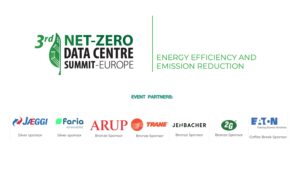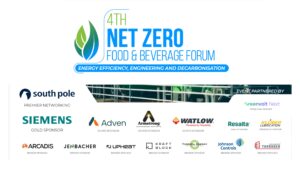The European Union’s REPowerEU strategy is turning the entire game for businesses. It’s a lofty aspiration to decouple from Russian gas entirely by 2027, a step that’s absolutely vital for long-term European energy security. However, it’s not just a headline of politics; it’s a massive shock to Europe’s entire industrial base, which has relied on that gas for decades. Abruptly, everyone is rushing to identify realistic Russian gas alternatives. This compels businesses like yours to re-examine everything, from the layout of your plants to your future strategy.
The REPowerEU industrial impact is substantial, generating both genuine risks and unexpected new opportunities. This article goes through what’s actually going on behind the scenes, examining the challenges, the actual business risks in the real world, the truth concerning the alternatives, and the savvy strategies that will separate the winners from the losers.
Strategic Exposure — How Deep EU Industries Depend on Russian Gas Infrastructure
You may think that dependence is purely a question of the figures you look at on a spreadsheet, but it goes far beyond that. For so many European companies, the reliance on gas is literally baked into their factories, their boilers, and how they operate day-to-day. That’s why merely replacing one fuel with another is far more complex than it appears. This section explores these unapparent dependencies and how they contribute to the difficulty of the transition:
Gas-Dependent Industrial Clusters and Locked-In Heat Systems
Consider Europe’s largest industrial parks. Most of them were constructed where they are for one huge reason: ready access to natural gas. For processes that require intense heat, such as manufacturing glass, steel, or chemicals, their entire process hinges on gas. Their heating systems and furnaces are specially designed for it. You can’t simply wake up one day and decide to operate them on electricity. It’s like trying to operate a diesel truck on gasoline—the engine itself is the issue, not merely the fuel you feed it.
This “locked-in” equipment poses significant industrial fuel switching challenges. To transition to electricity, a firm would have to entirely re-engineer its plant, which is expensive and takes years. That is the hard reality of the REPowerEU industrial impact. It pokes firms into a corner where they either have to take gigantic, uncertain investments or stick with an exceptionally volatile gas market, which poses very serious concerns for EU industrial competitiveness energy.
East-to-West Pipeline Legacy and Reverse Flow Constraints
For the last fifty years, the energy geography of Europe has been very simple. A gigantic network of pipelines was engineered and constructed to transport huge quantities of Russian natural gas from the east to manufacturing powerhouses in the west. All these pipes were designed to flow in one direction only. Although engineers have made mechanical miracles to redirect the flow of some pipes, the system itself is limited. This is a significant part of the European energy security jigsaw that tends to get underreported.
So, just because the new Spanish or German coastal terminal is brimming with imported liquid natural gas (LNG), it doesn’t necessarily mean that a Hungarian factory can connect to it. If the pipes in between cannot absorb the flow, then you have a choke point. This is creating a fractured Europe, with some areas being supplied with Russian gas alternatives and some areas being exposed. Upgrading this legacy pipeline system is slow and expensive, and is still a large hurdle to the energy transition across the continent.
Grid Load Rigidity and Low Elasticity in Manufacturing Demand
Even the most progressive manufacturers—those already making preparations for electrification—are running into brick walls when attempting to follow through. It’s not that they underemphasized the power needs; it’s that the grid doesn’t react with the same sense of urgency. Load approvals are bogged down in multi-agency reviews. Local utilities are unable to assure delivery schedules. And in most areas, there just isn’t a short-term solution to obtain a megawatt-scale boost without initiating massive public infrastructure spending that is beyond the control of the business.
This lag between internal preparedness and external readiness puts firms in limbo. You may have already purchased electric furnaces or executed offtake contracts, but without the local grid operator being able to accommodate the draw, the entire plan gets held up. Some companies are now putting their electrification roadmaps on the shelf—not because the strategy is misguided, but because the system surrounding them won’t move quickly enough. And in the current race to remain competitive, standing still is a risk unto itself.
Uneven Investment in National Transition Infrastructure
All EU nations are addressing the energy transition, but not at the same pace. Coastal nations like Germany and the Netherlands have been able to develop new terminals for LNG imports in a short time. This has come as a big assistance in securing Russian gas alternatives. The situation for landlocked nations in Central and Eastern Europe is more difficult. They must depend on their neighbors to construct new pipelines to transport that gas inland.
This disparity in tempo is generating a very unbalanced energy landscape in Europe. Consequently, the REPowerEU industrial impact feels very disparate depending on where your company is based. Some nations are racing forward with hydrogen-capable pipelines and more resilient grids for electricity, and others are lagging. This will easily skew competition within the EU, making some businesses less able to compete and generating new headaches for overall European energy security.
Risk Translation — Where Energy Security Disrupts Industrial Strategy
At the end of the day, REPowerEU is not just about where Europe gets its energy. It’s about whether European industries can survive and thrive through this massive change. The move away from stable Russian pipeline gas to globally traded Russian gas alternatives is creating a whole new set of risks that go right to the heart of business strategy. This part of our discussion explores how this energy shift is forcing companies to rethink their future:
Margin Compression and Operational Volatility in Manufacturing
The single biggest headache for industry right now is price volatility. European companies now have to buy LNG on the open market. This means a heatwave or supply issue in Asia or the US can cause energy prices to spike in Europe, that too without a warning. This makes it almost impossible to budget accurately or plan production with any certainty. It’s a huge factor affecting European energy security.
For any enterprise in which energy is a significant cost, this perpetual uncertainty is a nightmare. It straight squeezes your margins and leaves your day-to-day operation uncertain. You might have to delay a production run because energy prices are too high, which hurts your efficiency and your ability to serve customers. Companies are desperately trying to figure out how to hedge against European gas price volatility, but it’s a constant battle that impacts overall EU industrial competitiveness energy.
Early Signs of Industrial Offshoring and Plant Closures
When faced with energy bills that are both sky-high and unpredictable, some businesses are being forced to consider the unthinkable. We are already seeing the early signs of the risk of industry relocation from EU energy costs. Industries that use a ton of energy and face tough global competition, like fertilizer and aluminum producers, have already had to scale back or even shut down factories in Europe.
Company leaders are now asking themselves a hard question: does it make more sense to invest a fortune in new, green technology here in Europe, or to move our operations to a place like the US, where energy is cheaper and more stable? This is the stark reality of the REPowerEU industrial impact. If more companies choose to leave, it would be a huge blow to Europe’s economy and its goal of building a future based on secure Russian gas alternatives.
Energy Uncertainty in Long-Term CapEx Planning
When a company decides to build a new factory, it’s placing a bet on the future that will last decades. How do you make that decision, however, when you have no idea what energy’s going to cost, or even what kind is going to be around, in ten or fifteen years? This radical uncertainty is having a dramatic freezing effect on long-term investment in Europe.
The impact of REPowerEU on manufacturing is making companies press pause on big projects. A business looking to expand has to guess as to whether electricity, hydrogen, or another fuel will be the wise move in the future. With so much guesswork, many are deciding to wait and watch, holding off on major projects or redirecting their investment capital elsewhere in the world. This lack of investment is a silent threat to Europe’s future industrial strength and its ability to maintain strong EU industrial competitiveness energy.
Workforce Disruption and Political Fallout of Downscaling
These top-level business threats have incredibly human implications. When a major factory shuts, it’s not just a line on a spreadsheet. It’s rather a crisis for the entire community. Moreover, it’s about lost jobs, not only at the factory itself but also for all the local small businesses that depended on it. This is where the real-life REPowerEU industrial effect bites hardest.
This type of disruption causes a massive political dilemma for governments. They find themselves stuck between attempting to reach their longer-term energy objectives and responding to the short-term pressure of safeguarding jobs and domestic economies. The risk of industry relocation from EU energy costs becomes a touchy political topic very soon. Trying to balance these colliding pressures is one of the most difficult issues that leaders must overcome while they are going through this transition in energy.
Substitution Under Constraint — What’s Replacing Russian Gas and Why It’s Not Enough (Yet)
Europe is jumping through hoops to discover new energy supplies. It’s an enormous undertaking with new terminals, pipelines, and technologies. But are these Russian gas alternatives truly ready to drive Europe’s manufacturing machine reliably and with affordability? The reality is, it’s complicated. Every solution has its downside, which is a determining factor for European energy security. This part offers a realistic assessment of the new energy sources and their constraints:
LNG: Increased Volume, Persistent Bottlenecks
Liquefied natural gas, or LNG, imports have been the primary approach to date, and they have served to avert a full-fledged crisis. Through rapidly constructing new import facilities, Europe has been able to import shiploads of gas from allies such as the US. But this has introduced new issues. One of the largest is the chronic problem of LNG bottlenecks Europe. There’s plenty of gas along the coast, but moving it inland where it’s needed still runs into trouble. The pipelines just can’t handle it.
In addition to all this, Europe is now tied to the ups and downs of the global LNG market. This introduces additional price volatility and less stability than the previous regime. So, although LNG has been an important lifeline, it’s not a great replacement. It has filled the short-term supply gap but added new price and infrastructure risks that companies must deal with as part of the new reality of the REPowerEU industrial footprint.
Hydrogen and Biomethane’s Industrial Readiness Gap
You hear a lot about green hydrogen and biomethane as the clean fuels of the future. They are viewed as the final Russian gas substitutes, particularly for those industries that are difficult to electrify. European energy security in the long term depends on them heavily. But let’s be realistic and know where we stand. The reality is that the green hydrogen industrial readiness is still years ahead. It is now very costly to produce, and we lack the storage or pipelines to deal with it at scale.
Biomethane is slightly easier to fit in, but it’s extremely hard to make enough of it to actually dent industrial demand. There are lots of encouraging projects, but these fuels are a 2030s solution, not a 2027 fix. The cost and infrastructure-related industrial fuel switching challenges ensure that these encouraging technologies are not yet ready to be the engine of European industry.
Renewables and Grid Shortfalls for Baseload Demand
Expanding wind and solar power is a huge part of the REPowerEU plan, and for good reason. Every kilowatt of electricity we generate from renewables is one less we need from gas. But for heavy industry, there is a big catch: renewables are not available 24/7. The fact that there are severe grid constraints for renewables in industry is that you can’t just run a factory on wind and solar alone, because they require constant, baseload power to continue running.
This is the gap between the time that green power is produced and the time that industry requires it, a basic issue. On top of this, the energy grid itself isn’t usually robust enough in industrial regions to carry all the new green power being produced. This causes bottlenecks on the energy highway, slowing things down. The REPowerEU industrial impact, therefore, depends heavily on our ability to modernize the grid and develop massive energy storage solutions.
Physical Storage and Strategic Reserve Limitations
Europe’s underground gas storage facilities are like a giant battery for the energy system. They allow countries to store gas in the summer and then use it in the winter when demand is highest. Keeping these sites full has been a key part of the strategy to maintain European energy security. But it is important to understand what these reserves are for. They are meant to level out seasonal fluctuations, not replace a significant supplier permanently.
These storage facilities can help mitigate the impact of a short-term issue, but they are not a solution for the long term by themselves. They can’t supply all of Europe’s industrial demand for years if the supply of Russian gas alternatives stalls. So while storage is a vital tool in the toolbox, it does not eliminate the underlying risk. It highlights the urgent need for a truly diverse and resilient energy system for the long haul.
Strategic Resilience — How Industry and Policymakers Are Mitigating Energy Risk
Everyone knows a perfect, easy replacement for Russian gas won’t happen overnight. So smart companies and governments are now building resilience. This means using a clever mix of policies, financial tools, and forward-thinking strategies to manage the risks of this new era. This final section explores the practical steps Europe is taking to ensure energy security and navigate the industrial impact of REPowerEU:
Long-Term Contracts, Dual-Sourcing, and Energy Hedging
The smartest companies are no longer just buying energy on the short-term market. Instead, they are building a sophisticated portfolio of strategies. A key tactic is signing long-term deals, like Power Purchase Agreements (PPAs), to buy renewable electricity at a fixed price. This is a direct answer to the question of how to hedge against European gas price volatility. It gives them much-needed budget certainty for a portion of their energy needs.
Beyond that, they are also practicing dual-sourcing. This means they get their energy from multiple suppliers at once, maybe buying some pipeline gas from Norway while also having a contract for LNG. This way, they are not too reliant on any single source. On top of this, businesses are using financial tools to protect their budgets from sudden price swings. This multi-layered approach to procurement is the new standard for finding reliable Russian gas alternatives.
EU Incentives for Industrial Energy Transition Projects
To help companies manage this difficult transition, the EU and its member countries are offering a lot of financial support. These programs address the impact of REPowerEU on manufacturing directly. Funds like the Innovation Fund are providing grants and subsidies to help businesses invest in important projects. These include things like:
- Upgrading equipment to be more energy-efficient,
- Switching factory processes over to electricity,
- and adopting new technologies, such as renewable hydrogen.
This financial help is critical because it reduces the risk for companies making these huge, expensive investments. It helps them modernize and decarbonize without losing their ability to compete on the world stage. These incentives are a key tool for boosting EU industrial competitiveness energy. This is while also moving toward a more secure energy future. Additionally, they are helping to speed up the entire transition by making these future-focused projects possible today.
Public–Private Partnerships in Infrastructure Buildout
Governments can’t build this new energy system by themselves, and neither can private companies. That is why we are seeing a rise in public-private partnerships, or PPPs. In these partnerships, governments and businesses collaborate to invest in and develop the massive infrastructure projects that everyone needs. This teamwork is proving essential for creating reliable Russian gas alternatives.
These PPPs fund critical projects like new hydrogen-ready pipelines, stronger electrical grids, and carbon capture facilities. For instance, governments and groups of industrial companies work together to create “hydrogen corridors”. It ensures they build the infrastructure to produce and transport hydrogen alongside the factories that will use it. This helps solve problems like the LNG bottlenecks Europe and other logistical challenges much faster.
Corporate Scenario Planning and Risk Modeling
In today’s uncertain world, the most successful companies are the ones that plan for more than one future. Instead of just hoping for the best, they use advanced scenario planning to prepare for a range of different outcomes. They are actively modeling the risk of industry relocation from EU energy costs and stress-testing their business models against all kinds of situations. For example, what would they do if energy prices stay high for five years? Or if there is a sudden disruption to LNG supplies?
By thinking through these “what if” scenarios, companies can spot their biggest weaknesses and create smart contingency plans ahead of time. This might mean:
- Securing backup fuel options,
- Finding alternative suppliers for key materials,
- Or investing in flexible equipment that can run on different types of energy.
This deep, strategic planning is how businesses are learning how to hedge against European gas price volatility and build real, lasting resilience.
To Wrap It Up
This energy reset is more than a challenge; it is the strategic event that will define a new generation of industrial leaders. Winning is no longer just about managing costs. It is about building a decisive competitive advantage by turning market volatility into opportunity. The companies that will thrive are those that move from a defensive crouch to an offensive strategy, mastering the new rules of energy procurement and risk.
To get the playbook for this new reality, the 4th Net Zero Energy Sourcing & Power Purchase Agreements Summit in Frankfurt, Germany, on September 10-11, 2025, is essential. It’s a unique chance to dive into real-world case studies on risk, explore innovative PPA structures that are working right now, and learn directly from the peers and experts who are already executing these winning strategies.




